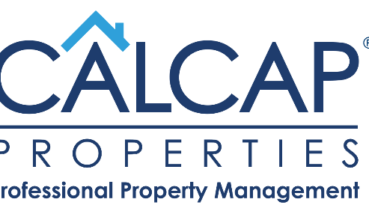In today’s dynamic property management landscape, success hinges on balancing rapid growth with a dedication to quality service. CALCAP Properties stands out as a rising star in this secto...
Larry Stone's Legacy: Santa Clara County Assessor Manages $700 Billion Property Portfolio with Remarkable Efficiency




“What gets measured gets done. You can’t evaluate what you can’t measure.” – Larry Stone, Santa Clara County Assessor
In Silicon Valley, where tech innovations and billion-dollar valuations dominate headlines, one of the most impressive success stories belongs not to a startup, but to a public servant who has quietly run a county department with remarkable efficiency for nearly three decades.
Larry Stone, now in his eighth term as Santa Clara County Assessor, oversees an $8 billion enterprise that manages the assessment of approximately 500,000 properties valued at $700 billion – all while returning millions to county coffers and operating with virtually the same staffing levels as when he took office in 1995.
From Wall Street to Sand Hill Road
Before becoming the tax man for Silicon Valley’s tech giants, Stone’s career path took him from Wall Street to California’s emerging venture capital scene in the 1970s.
“I was recruited to work on Wall Street. I lived on the East Side of Manhattan. I had a two-bedroom, two-bath apartment that I shared with another guy,” Stone recalls of his early career. “I got married, and my boss transferred me to San Francisco, the regional office of what was then the second largest brokerage firm on Wall Street.”
When later faced with a potential transfer back to New York, Stone opted to stay in California, co-founding an investment firm for high-income earners. “We were the first tenant at 3000 Sand Hill Road. The second tenant was Kleiner Perkins,” he notes, referencing the now-legendary venture capital firm that would become synonymous with Silicon Valley’s tech ecosystem.
His firm soon pivoted to real estate, initially helping Levi Strauss employees diversify their assets after the company went public in 1972. “We were essentially real estate syndicators. We were raising money, buying shopping centers, office buildings, apartments,” Stone explains.
After the Tax Reform Act of the mid-1980s changed the landscape, Stone shifted to affordable housing development. “I want to build affordable housing,” he told a business partner after leaving his previous venture. Today, he remains a partner and owner of approximately 500 units of affordable housing in San Francisco and San Jose.
Political DNA Meets Management Excellence
Raised in a political family, Stone describes politics as “part of my DNA.” His public service career includes 16 years as a Sunnyvale city council member and mayor, where the city earned international recognition for its efficiency.
“Bill Clinton, when he kicked off the national performance review, he did it in the city of Sunnyvale,” Stone recounts. “President Clinton declared the city of Sunnyvale was the best managed local government in America.”
Stone brought those management principles to the Assessor’s office in 1995. The results speak for themselves:
- The assessed value of all real and business property has increased 500% during his tenure
- His office operates with just three more employees than when he started (253 now vs. 250 then)
- He has returned $35 million of his budget back to the general fund
- His office has underspent its budget in 29 of 30 years
“Performance-based management in government is essential for success,” Stone emphasizes. “People think the Assessor is a political job, okay, largely because I’m very involved in politics outside of the office. But once you are elected, there is nothing I do as the assessor that has anything to do with politics in rendering property assessments.”
Assessment Accuracy: Where Real Estate Expertise Meets Public Service
Stone’s extensive real estate background proves invaluable in his role. “My real estate background helps a lot. I’m a certified appraiser with the state of California, but I’d be dangerous if I ever tried to appraise a Silicon Valley commercial property. But it helps to know what goes on and how this stuff works.”
This expertise is particularly crucial in Silicon Valley where assessing properties like Apple’s $5 billion headquarters requires sophisticated valuation approaches.
“We assessed the “Apple Spaceship”, the most unique property I think in the country,” Stone explains. “The Apple tax manager told me that they paid over $5 billion to build the spaceship. We assess it at about $3.8 billion.”
When questioned about this discrepancy, Stone clarifies a fundamental principle of property assessment: “The value of properties is based upon their fair market value. Anyone that might purchase Apple’s iconic property today would never pay $5 billion or probably even close to it.”
His office is currently handling approximately 9,000 active assessment appeals representing $130 billion in disputed valuations. Yet, his office historically retains 92% of the assessed value in dispute, a testament to their accuracy and professionalism.
Beyond Buildings: The Silicon Valley Difference
Unlike many counties, Santa Clara’s assessment roll includes substantial business and personal property – about 10% of the total.
“In Silicon Valley, that’s a big deal. We have the fourth largest assessment roll in California, but we’re number two in the assessment of business and personal property. Why? Because we’re Silicon Valley where high-tech companies have multi-million-dollar specialized machinery and equipment,” Stone explains.
The Impact: Following the Money
The revenue resulting from Stone’s property assessments funds critical public services throughout Santa Clara County:
- 44% goes to public schools
- 7% funds community colleges
- 18% supports county programs, including four county hospitals
- 14% is distributed to the county’s 15 cities
- 11% services debt from former redevelopment agencies
- 6% supports special districts like water and fire
Challenges and Succession Planning
At 84, Stone acknowledges the importance of succession planning, but is cautious about who might take the reins.
“I have said that if I find somebody that has the kind of management and financial experience to do this job at the level that the public expects, I’m happy to step aside,” he states. However, he emphasizes that political experience alone isn’t sufficient – the role requires high-level fiscally responsible leadership grounded in performance.
“I’m not going to turn over what is widely considered the best assessor’s office in the state of California to somebody that will make political decisions instead of value-based decisions,” he emphasizes.
The Management Philosophy that Drives Success
Stone’s approach to public service blends private sector discipline with public sector values. His staff includes certified appraisers, auditors, CPAs, and other highly qualified professionals who “enjoy this stuff, but they also like the security of working for the government.”
His management philosophy is simple yet powerful: “What gets measured gets done. You can’t evaluate what you can’t measure.”
Stone’s methodical approach has established the Santa Clara County Assessor’s Office as a model of public sector efficiency – demonstrating what’s possible when private sector experience, political acumen, and management discipline converge in public service.
Similar Articles
Explore similar articles from Our Team of Experts.


“This program, together with 485x, will significantly reshape the landscape for the next decade,” says David Shamshovich, discussing the city’s newest housing incentives wi...


After nearly three decades at the forefront of sustainable construction, Robert Politzer has witnessed a sea change in attitudes toward green buildings. The founder and CEO of GreenStreet Gl...


Bedrock Energy's Joselyn Lai on Making Geothermal Heat Financially Viable for Commercial Real Estate
“Sustainability is not a scalable approach if it’s just about thoughts and feelings and the idea of being green,” says Joselyn Lai, Co-Founder and CEO of Bedrock Energy. &#...


The multi-family real estate market in the Midwest is showing encouraging signs of recovery after a challenging 2023, according to Jack Friskney, a prominent multi-family broker at Marcus &a...




